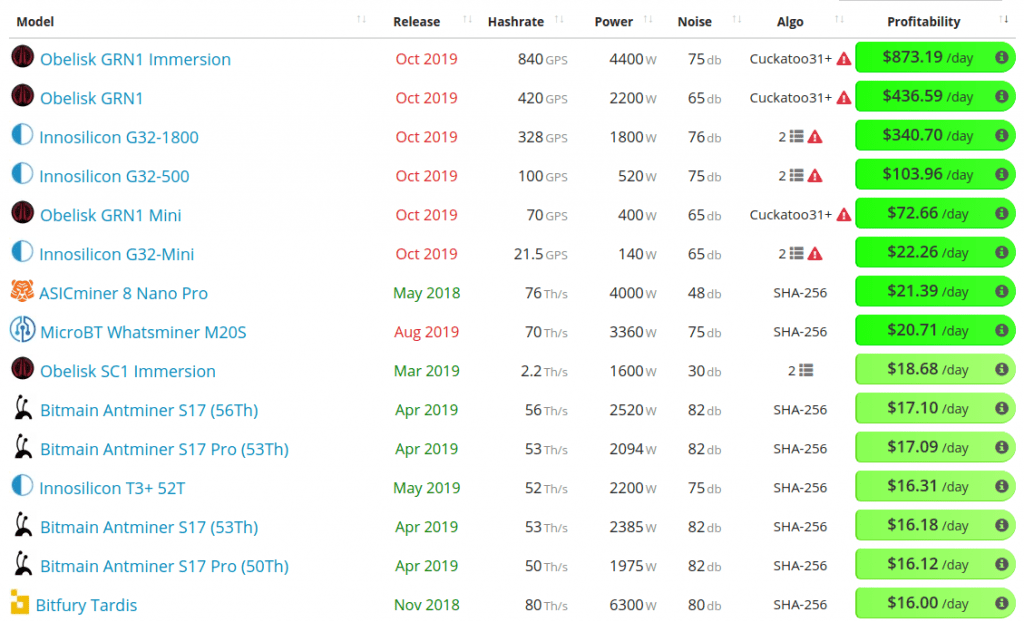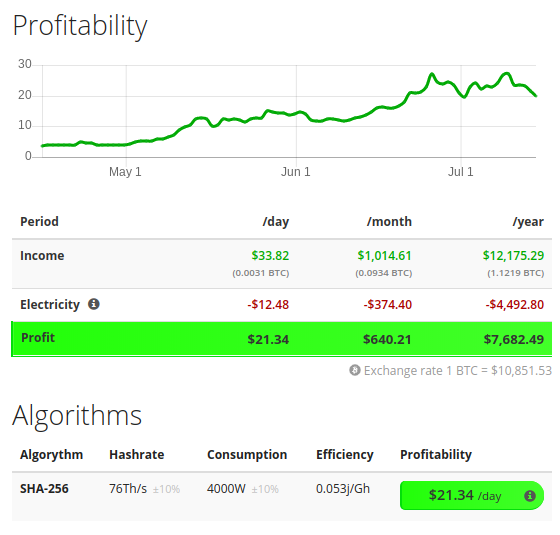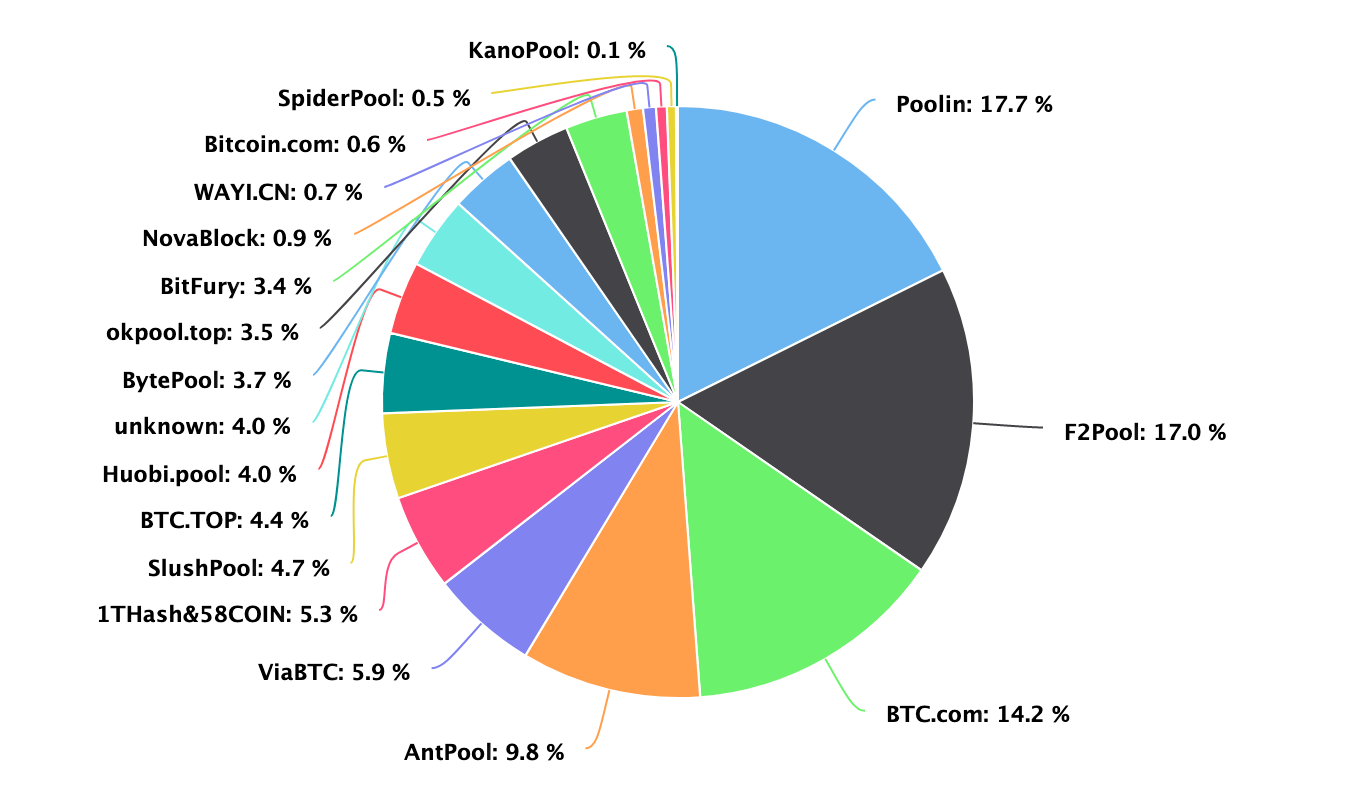Can You Make Profits Mining Cryptocurrency?
The final part of Darren Kleine's series on cryptocurrency mining.

Share this article
As Bitcoin fights back above five digits and other altcoins move into the green, many crypto enthusiasts are wondering if there are still profits in cryptocurrency mining.
If you’re not certain you can make profits from cryptocurrency mining, the answer is probably ‘no.’ Most profitable operations have enormous sunk costs, including wholesale purchases of energy, cooling, and ASIC machines.
Cryptocurrency Mining Profits: Spend Money To Make (A Little) Money
A number of new ASIC competitors are entering the market. Most notably, Samsung is in the process of making ASICs and other companies, like BitFury and ASICminer, might give Bitmain a run for their digital money.
It’s considerably easier to mine with a GPU. ASIC-resistant coins are more accessible to casual miners, but they are extremely vulnerable. Hash-renting services, like NiceHash, allow anyone to launch a 51% attack against these networks, without having to own the equipment. As this article demonstrates, a relatively low-hashrate GPU-dependent network cannot stand up to such potential exploits.
It’s also worth noting that most altcoins just aren’t what they used to be. Depending on electrical costs, many altcoins simply aren’t worth mining without having a highly efficient and powerful set-up.
In the U.S., casual miners using a hefty twin GeForce 2080Ti rig might only pull in a couple bucks a day or even less after expenses. At that rate, it could take a couple years or more just to pay for the video cards. This low-to-no profitability problem could well eventually cause the deaths of many GPU-mined altcoins if hashrates are insufficient for securing the networks.
Take a look at some of the top current and soon-to-be-released ASIC miners to get an idea of what your daily profits might look like with these beasts:

Some miners, like the Obelisk GRN1 Immersion for Grin, have yet to be released, so let’s set their projected profits aside for the moment and look at current offerings.
Consider the example of the ASICminer 8 Nano Pro, one of the highest-performing ASICs currently available. It can net you as profit of around $21.00 a day per miner, assuming you’re paying 13 cents per kilowatt hour. Pretty decent, right?

But there’s one itty-bitty problem. This device is clearly not aimed at the casual user. To purchase this machine from ASICminer, you would have to shell out more than $9,000 per unit… and, at the time it was launched, you had to order a minimum of 50 units.
Believe it or not, The 8 Nano Pro is currently sold out. Instead you could opt for the newer ASICminer Zeon Turbo for a daily profit around $25, which appears to have taken its place, now discounted at $9500.
On a more realistic level, the Bitmain Antminer S17 might do the job. It still carries a fairly hefty price tag of a few thousand bucks (and screams like a banshee when in operation), but can be bought individually for more casual use. After electricity, you’re looking at pulling in about $17.00 a day in profits.
Still, it would take more than 500 days of mining, at the current price of Bitcoin, in order to get ahead of your purchase costs. This is a pretty serious commitment with very delayed gratification.
It’s pretty clear how these sorts of prices might scare off your average casual crypto-curious individual who simply wants to dabble in mining. This “price wall” hurts the cause of decentralization as fewer individuals or companies have the means to help secure the network.
Choosing A Mining Pool
Among the most daunting steps in the mining process is the selection of mining pools. Mining pools can offer a broad variety of parameters that directly affect your profits, from the pool fees to payout arrangements to transaction fee payouts.
For mining Bitcoin, some miners prefer to go with the bigger pools such as Slushpool, one of the oldest and most trusted of all mining pools. Other large pools like Antpool and BTC.com are popular choices, as well.
But payout arrangements can be convoluted and a little confusing. In the case of Slush, for example, pool fees are 2%, which is a little higher than Antpool. But Antpool does not always pay out the transaction fees, whereas Slush has consistently done so. For a detailed breakdown and comparison of major Bitcoin mining pools in 2019, check out this recent article.

Smaller pools can also have lower fees, but a miner may need to wait longer to hit a block reward due to the smaller size of the pool. Smaller pools are often more vulnerable to down-time, during which a miner makes no mining profits whatsoever.
But over time, the rewards should work out to be about the same, assuming the pool remains stable. For those wanting more steady and frequent payouts, the larger mining pools offer greater reliability, but the associated fees may make the smaller pools a little more enticing if you’re patient enough to wait.
When it comes to altcoins, there’s much more choice in mining pools. Each and every PoW altcoin may offer a large range of pools with different payout arrangements, some with minimum thresholds for payments, some with higher or lower pool fees, and some with no fees at all.
For beginners, apps like Vertcoin’s One-Click Miner are a great place to start experimenting with GPU mining. This application walks the user through each step in the mining process and helps in the selection of pools with statistics such as pool fees and up-time included in the GUI.
Instead of all this technical malarkey, one could instead opt for the easier approach with NiceHash. Using the NiceHash service, one can simply sell hashing power, which is then used to mine the most profitable cryptocurrencies.
Your computer provides hashing power to the network, which is then paid out in bitcoins to a wallet in your custody. This alleviates some of the difficulties in choosing which cryptocurrency to mine and eliminates the need to find the best mining pools.
NiceHash is also taking a piece of the action for themselves, so it is slightly less profitable than if you were to go it alone. Still, it removes a lot of the hassles involved in getting going with mining and can be a good place to start.

Fighting For Decentralization
Finally, let’s examine what developers of a range of cryptocurrencies are doing to address the issue of centralization. Since there are over 1,000 different cryptocurrencies along with a broad variety of PoW mining algorithms, it is impossible to be exhaustive on this topic. So, for the sake of illustration, we will examine a few examples.
Monero And The Battle Against Centralization
Last year, the Monero community was alarmed to discover ASICs mining on their network. Bitmain had “cracked the code”, successfully designing an ASIC for XMR’s Cryptonight algorithm. The all-new Antminer X3 would deliver huge profits compared to meager GPU rigs. Offered a “discount” at $3,000, the new miner had excellent profit potential.
The response of Monero’s developers could not have been more clear. They had suspected that Bitmain themselves had been secretly ASIC-mining Monero for a while as evidenced by a spike in hashrates, and were now ready to unload their used ASICs on unsuspecting buyers. Monero was ready for the change:
In response to Monero’s announced fork, the price on the X3 was dropped to a fire sale value around $1,000 — still a relatively expensive doorstop, considering it would be virtually worthless. After the fork, it was only able to mine a few other relatively worthless currencies.
Thus, Monero developers successfully staved off an “ASIC attack” from Bitmain, purportedly retaining a greater degree of decentralization. More recently, Monero developers have been working on adding further ASIC-resistance with the RandomX solution, which randomly alternates between a variety of algorithms to stymie ASICs.
Siacoin is another example of a project that balked at the domination and subsequent mark-ups of ASIC equipment from certain monopolizing manufacturers. By deliberately bricking competing ASICs produced by Bitmain and Innosilicon with a built-in kill-switch, developers staved off ASIC domination from the manufacturing behemoths. This allowed the Obelisk SC1 miner, a community-led project, to successfully mine Siacoin and render the solutions from Bitmain and Innosilicon useless.
Other outspoken currency developers joined in the anti-ASIC movement, sometimes referred to as the #FairMining movement. It’s largely promoted by figures at Digibyte and Vertcoin, among others.
These currencies used forking and highly memory-intensive algorithms to fight ASIC-mining, with some success. While one can develop ASICs for memory-intensive algorithms, they are very costly to develop and manufacture. And with developers willing to hard fork their currencies on a regular basis, it becomes a question of how much money can be made before the gravy train comes to a halt.
That’s how a number of ASIC-resistant coins have managed to fight off ASIC centralization. By simply threatening to change their mining algorithm, developers make it tough for Bitmain and other ASIC manufacturers to justify the investment of creating ASICs for these currencies.
Another solution is multi-algorithm design, which rotates through a random sequence of algorithms and makes it much more difficult to design an effective ASIC. One of the more profitable coins right now at whattomine.com is the multi-algo, Ravencoin. Digibyte was also an early pioneer of this technology.
That’s not to say an ASIC could not be designed for it, but it does make it tougher. It’s even possible that the team at Ravencoin could add an algorithm to the series to negate the efficacy of such an ASIC. Another example is Grin, which uses a combination of both ASIC-resistant and ASIC-friendly mining algorithms to secure the network.
As you can imagine, this constant tug of war requires developers — and ASIC manufacturers — to really stay on their toes in a technological arms race. With a positive change in market conditions, competition for hashing power is once again heating up. BTC is clearly leading the way in terms of longer-term profits, but most altcoins are struggling to keep up in the battle to secure their networks. It will be interesting to see where this technology progresses in the coming years of development.
This is the final article of a three-part series. Part one. Part two.
